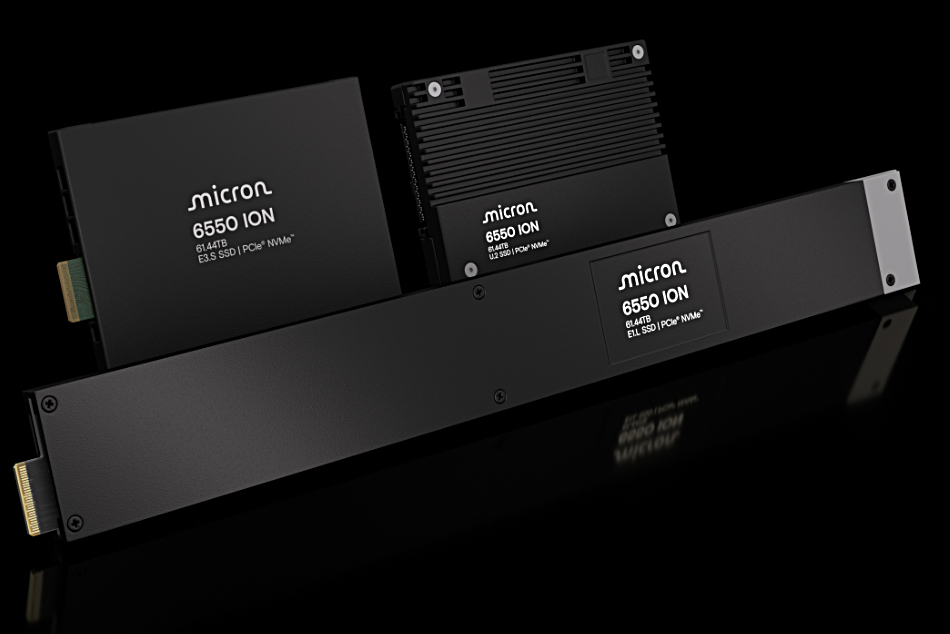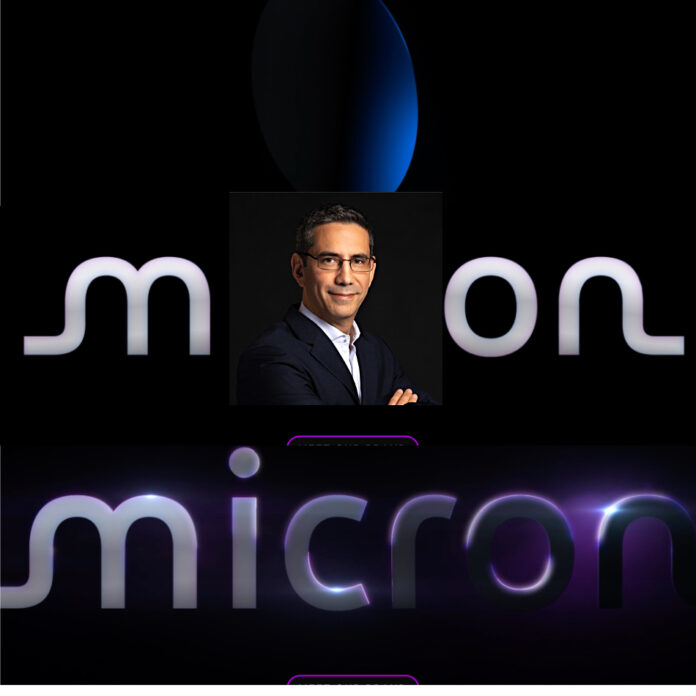Micron’s 6550 ION SSD matches the 61.44 TB capacity of Samsung, Solidigm, and WD’s competing drives, but promises higher performance as it uses the PCIe gen 5 bus instead of PCIe gen 4.
The 6550 ION is to be used in networked AI data lakes, and for ingest, data preparation and checkpointing, file and object storage, public cloud storage, analytic databases, as well as content delivery.
Micron says the drive is the industry’s first E3.S and PCIe 5 60 TB SSD. It has OCP 2.5 support with active state power management (ASPM). This allows the drive to idle at 4 watts in the L1 state versus 5 watts in the L0 state, improving energy efficiency by up to 20 percent when idling.

Alvaro Toledo, Micron’s Data Center Storage Group VP and GM, said in a statement: “Featuring a first-to-market 60 TB capacity in an E3.S form factor and up to 20 percent better energy efficiency than competitive drives, the Micron 6550 ION is a game-changer for high-capacity storage solutions to address the insatiable capacity and power demands of AI workloads.”
He said it “achieves a remarkable 12 GBps while using just 20 watts of power, setting a new standard in datacenter performance and energy efficiency.”
The 6550 ION comes in E3.S, E1.L, and U.2 form factors. It is an all-Micron drive using in-house DRAM, NAND, controller, and firmware. From the security point of view, it supports SPDM 1.2 for attestation, SHA-512 for secure signature generation, and is TAA-compliant and FIPS 140-3 L2 certifiable.
The drive’s endurance is one full drive write a day for the five-year warranty period. It’s built with what Micron calls its G8 NAND, with 232-layers. In June this year, Micron announced 276-layer 3D NAND, saying it was G9 NAND.

The 6550 ION follows on from the existing 6500 ION, which is a 30.72 TB PCIe gen 4 SSD with an NVMe link. It was announced in May 2023, built with 232-layer TLC NAND, and marketed as having TLC performance with QLC pricing. The drive was produced in U.3 and E1.L form factors, and the 6550 comes in these plus the E3.S form factor. The 6550 is built with Micron’s G8 3D NAND in TLC format, and claimed to be “one to three NAND generations ahead of competing 60 TB SSDs,” meaning drives from Samsung, Solidigm, and Western Digital, which all use the PCIe gen 4 bus.
We think Micron has renumbered its 3D NAND generations and missed out a generation as well. B&F asked to clarify its 3D NAND generation numbering and layer counts.
For reference, Samsung’s QLC BM1743 uses its seventh generation 176-layer 3D NAND. Solidigm’s QLC D5-P5336 has 196-layer NAND, and Western Digital’s TLC DC SN655 drive uses 112-layer NAND with a PCIe gen 4 interface.
The actual 6550 performance numbers are 12.5 GBps for sequential read/write bandwidth, 1.6 million random read IOPS, and 70,000 random write IOPS. This is faster than the competing drives named above:
- Samsung BM1743 – 7.2/2 GBps sequential read/write and 1.6 million/110K random read/write IOPS
- Solidigm D5-P5336 – 7/3.3 GBps sequential read/write and 1.005 million/43K random read/write IOPS
- WD DC SN655 – 6.8/3.7 GBps sequential read/write and 1.1 million/125K random read/write IOPS
As the 6550 uses the faster PCIe gen 5 bus, the sequential speed advantage is hardly surprising. It is slower in terms of random read and write IOPS than Samsung’s BM1743.
Micron claimed that “as the world’s first E3.S 60TB SSD, the 6550 offers best-in-class density, reducing rack storage needs by up to 67 percent.” It can “store over 1.2 petabytes per rack unit” and by “using a 1U high-density server, such as the HPE ProLiant DL360 Gen11 that can accommodate 20 E3.S drives per rack unit, operators can load servers in a single rack with 44.2 petabytes.”
The 6550 ION can be fully written in 3.4 hours, while competing drives take up to 150 percent longer to fill. Micron says the 6550 ION delivers:
- 179 percent faster sequential reads and 179 percent higher read bandwidth per watt
- 150 percent faster sequential writes and 213 percent higher write bandwidth per watt
- 80 percent faster random reads and 99 percent higher read IOPS per watt
Specifically with AI workloads, it has:
- 147 percent higher performance for Nvidia Magnum IO GPUDirect Storage (GDS) and 104 percent better energy efficiency
- 30 percent higher 4KB transfer performance for deep learning IO Unet3D testing and 20 percent better energy efficiency
- 151 percent improvement in completion times for AI model checkpointing while competitors consume 209 percent more energy
With large AI training jobs involving models with billions of parameters, checkpointing is sometimes run as often as hourly, causing GPUs to be idle for minutes or even tens of minutes while the checkpoint is written to SSD storage. Faster checkpoints pay off with faster training job times and fewer idle GPU hours.








